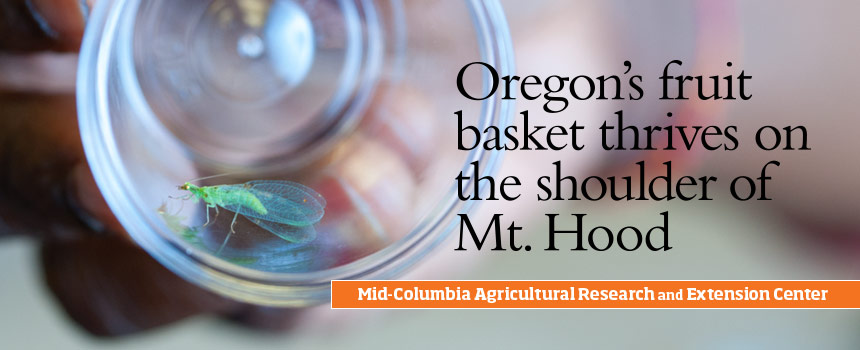Better pears are within reach

Farmworkers must climb tall ladders to harvest sweet d’Anjou or Bartlett pears. But the tart fruit of quince trees is easily reached from low-branches. A union between these two fruit trees could put efficient harvesting of high-valued pears within reach. Researchers at the mid-Columbia center are grafting the two species to create a high-value pear tree that is easier to harvest and comes into production sooner after planting.
[caption caption="OSU tree fruit specialist Todd Einhorn experiments with pear rootstock to improve fruit quality and harvest efficiency. (Photo by Lynn Ketchum.)"] [/caption]
[/caption]
In search of the right characteristics, Todd Einhorn, an OSU tree fruit researcher in Hood River, is cherry-picking rootstock tissue samples from the USDA’s world collection of quince genetic resources—an impressive genetic library located in Corvallis. Because quince trees are more susceptible to cold, not just any quince rootstock will do. After a meticulous three-year detective process, Einhorn and colleagues identified 22 quince cultivars as being cold hardy.
“We still need to understand how pear trees perform on these quince roots. Grafting will not work if they’re not compatible,” Einhorn said. He is working with USDA scientists and nursery professionals to tissue culture those 22 quince cultivars and graft them onto d’Anjou and Bartlett pear trees. In 2015 or 2016, researchers hope to plant the hardiest selections and test them in orchard conditions. And growers are watching—their Northwest Pear Bureau funds the project.
